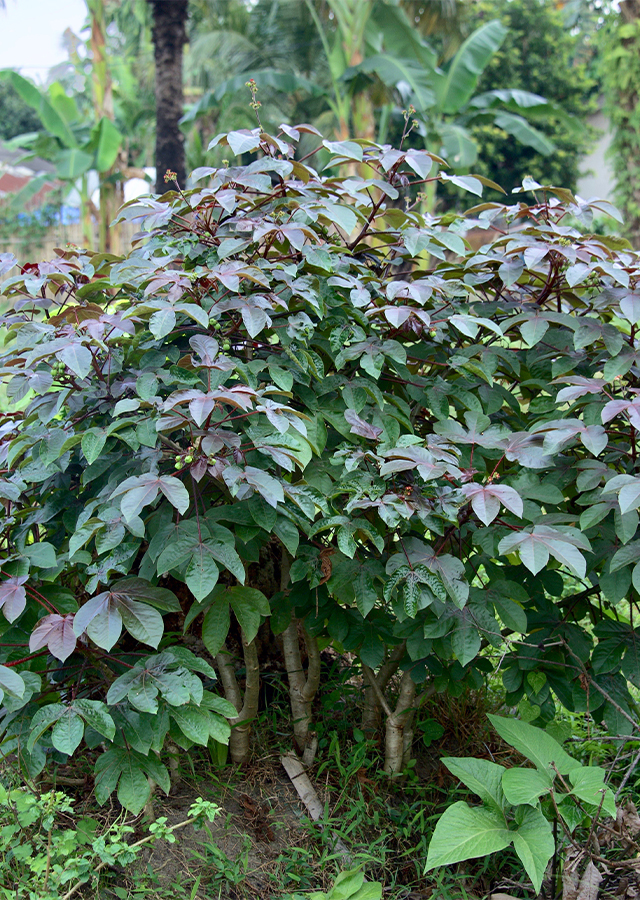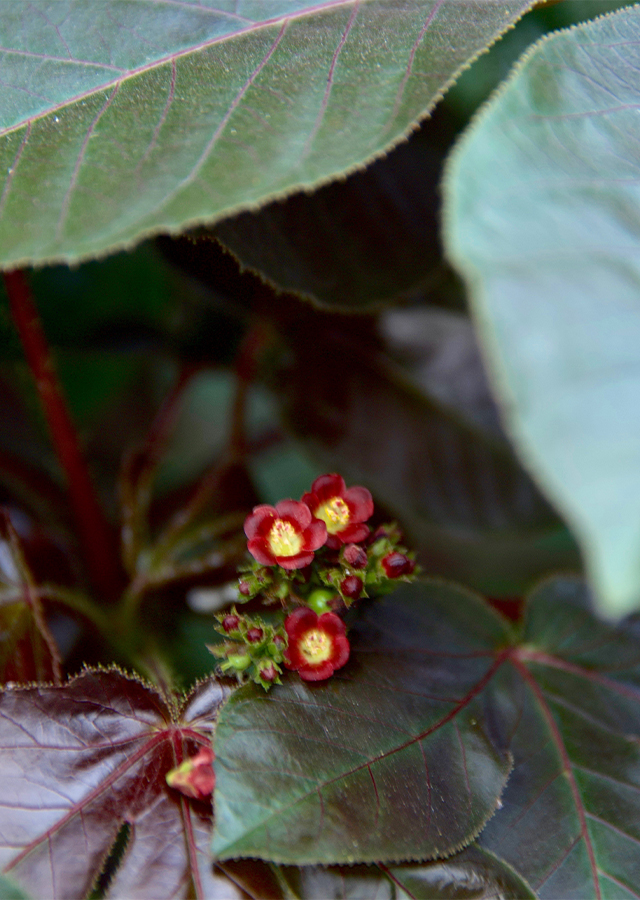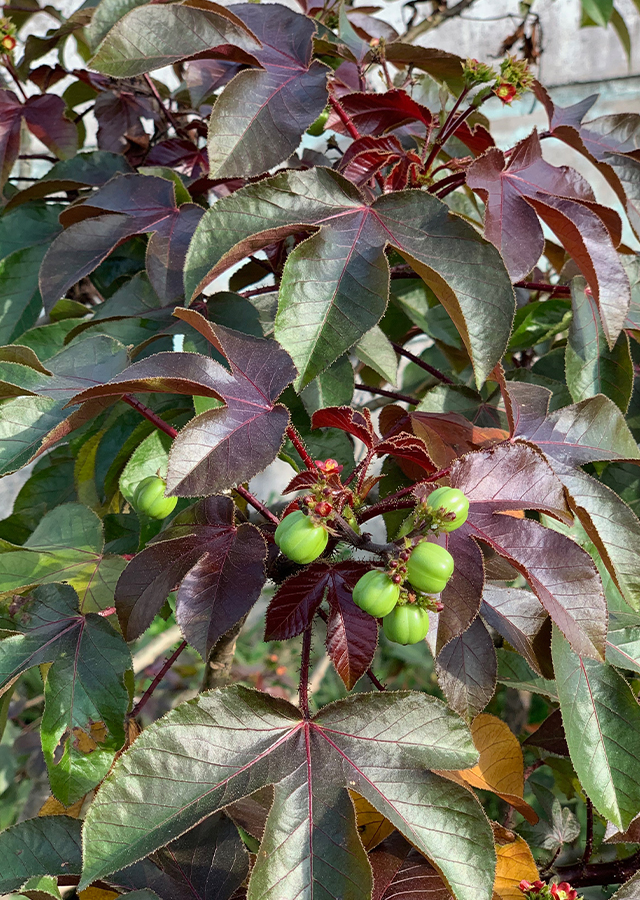Bellyache Bush
Jatropha gossypiifolia L.
Euphorbiaceae
Location in our garden
Principal



Synonym
Adenoropium gossypiifolium (L.) Pohl.
Manihot gossypiifolia (L.) Crantz.
Jatropha gossypiifolia var. typica Chodat & Hassl.
Habitus
Shrubs. An erect, woody, deciduous, shrub, grow between 2 to 3 m high
Part Used
Leaves
Seeds
Bark
Fruit
Roots
Growing Requirements
Full Sunshine
Need Shade
Habitat
Riverbanks
Forest
Coastal
Rocky Areas
Grassland
Overview
Jarak cina is native to tropical America from Mexico to Paraguay and the West Indies. It has been introduced as an ornamental, and regularly escapes from cultivation. Although poisonous, the plant is often used in traditional medicine, and being harvested from the wild for local use.
Vernacular Names
Cotton-leaved physic nut (En) Jarak beremah, jarak hitam, jarak merah (Malay), Jarak kosta merah, Jarak landi, Jarak cina (Indonesia).
Agroecology
A plant of the lowland tropics, often found in coastal areas. It is found in areas of Africa where the mean annual rainfall is between 400-1,200 mm and there is a distinct dry season. This plant can grow in full sun and light shade in well-drained sand, sandy loams and stony soils. It has escaped from cultivation in many areas of the tropics and become naturalized.
Morphology
- Roots - relatively small compared with the shoot system, stem to root ratios increasing with age.
- Stems - sympodial and apical dominance is absent because branching occurs at reproductive maturity.
- Flowers - inflorescence opposite a leaf, cymose, glandular hairy; male flowers with elliptical lanceolate to ovate, about 2.5 rom long calyx lobe, petals free, about 3.5 mm long, purplish-red, stamens 8(- 12), outer ones shorter than inner ones, filaments partly united; female flowers with calyx and petals as in male flower but twice as large, staminodes absent, stigmas capitate, bifid.
- Fruits - 3-lobed, roundish, about 1 cm in diameter, generally bright green and woody at maturity, turning pale green or tan when ripe.
- Seeds - about 7.5 mm long, pale greyish-brown, with a multifid caruncle.
Cultivation
Usually it is planted as ornamental that propagated by seeds and stem cuttings. It is well-adapted to arid and semi-arid conditions and generally occur in seasonally dry areas.
Chemical Constituents
Anthraquinones, flavonoids, phlobatannin, phenolat, saponins, tannins, amino acid, steroids, alkaloids, glycoside, terpenoids, quercetin, fraxetin.
Traditional Medicinal Uses
Medicinal Uses
- Leaves is used to as a febrifuge in intermittent fevers, or boiled and used in a bath to cure fever.
- The sap applied externally for healing wounds, as a haemostatic and for curing skin problems.
- The seeds in small quantity are used as a purgative and to expel internal parasites.
Traditional Uses
J. multifida is widely grown for its ornamental foliage and flowers. The seed oil is an ingredient of hair conditioners and as fish poison. The latex is used as molluscusidal.
Part Used
Reference Sources
- CABI. (2010). Invasive Species Compendium. Jatropha gossypiifolia (bellyache bush). https://www.cabi.org/isc/datasheet/28394. 08-02-2021
- Fern, Ken. (2014). Useful Tropical Plants. Jatropha gossypiifolia. http://tropical.theferns.info/viewtropical.php?id=Jatropha+gossypiifolia. 08-02-2021.
- Susiarti S, Munawaroh E and Horsten SFAJ. 1999. Jatropha L. In: de Padua, L.S. Bunyapraphatsara, N. and Lemmens, R.H.M.J. (Editor): Plant Resources of South-East Asia No 12(1). Medicinal and poisonous plants 1. Backhuys Publishers, Leiden, the Netherlands. p. 321-327



